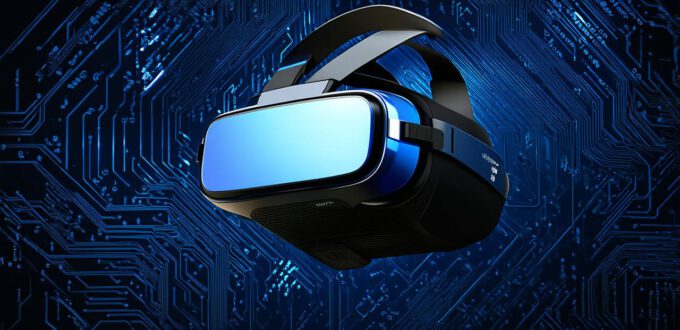Overview of Virtual Reality Development
Virtual reality (VR) is an emerging technology that provides users with immersive experiences by creating 3D environments in which they can interact. VR development involves several stages and requires specialized skills and tools. In this article, we will explore the overview of VR development, including its different types, and the process involved in creating a VR application.
Types of Virtual Reality Development
Virtual reality development can be categorized into two main types: room-scale and mobile VR. Room-scale VR requires a large space with sensors to track the user’s movement, while mobile VR uses smartphones or tablets as the primary device for interacting with virtual environments.
Tools and Frameworks for Virtual Reality Development
There are several tools and frameworks available for virtual reality development, including Unity, Unreal Engine, and A-Frame. These tools provide a range of features for creating and designing VR applications, including 3D modeling, texturing, animation, and audio. Additionally, there are software development kits (SDKs) available from hardware manufacturers such as Oculus and HTC Vive that allow developers to create applications for their respective platforms.
Best Practices for Virtual Reality Development
To ensure a successful virtual reality application, it’s important to follow best practices for VR development, including:
- Keeping the user in mind: When designing a VR application, the user experience should be at the forefront of the development process. This includes creating intuitive controls, minimizing motion sickness, and ensuring that the environment is easy to navigate.
- Optimizing for performance: Virtual reality applications require high-performance hardware to ensure a smooth and immersive experience. Developers should optimize their applications for performance by reducing draw calls, minimizing texture sizes, and using efficient algorithms.
- Testing and iterating: VR development is an iterative process, and it’s important to test the application throughout the development cycle to identify and fix issues before release. This includes testing on multiple platforms and devices to ensure compatibility.
- Staying up-to-date with technology: Virtual reality technology is rapidly evolving, and developers should stay up-to-date with the latest developments in hardware and software to create applications that are compatible with the latest VR devices and platforms.
Process of Virtual Reality Development
Pre-Development Planning
The pre-development planning stage involves defining the project scope, goals, and requirements. This includes identifying the target audience, defining the user experience, and determining the technology stack to be used for development.
3D Modeling and Design
The 3D modeling and design stage involves creating a 3D model of the virtual environment, including objects, characters, and environments. This can be done using specialized software such as Blender or Maya. Additionally, designers should consider the lighting, textures, and audio to create an immersive and engaging environment.
Animation and Interaction Design
The animation and interaction design stage involves creating animations for objects and characters in the virtual environment, as well as designing interactive elements such as buttons and menus. This stage requires careful consideration of user flow and interaction to ensure that the user experience is intuitive and enjoyable.
Development and Integration
During the development and integration stage, developers integrate the 3D models, animations, and interactions into the virtual environment. This stage also involves optimizing the application for performance and ensuring compatibility with different VR devices and platforms.
Testing and Deployment
The final stage of virtual reality development is testing and deployment. This includes testing the application on multiple platforms and devices to ensure compatibility and fixing any issues that are identified. Once the application has been thoroughly tested, it can be deployed to the intended platform or distributed through app stores.
Real-Life Examples of Virtual Reality Development
Epic Games’ Fortnite
Fortnite is a popular multiplayer battle royale game that has been adapted for virtual reality. The development process involved optimizing the game for VR devices, creating new VR-specific features, and testing the game on multiple platforms and devices to ensure compatibility.
Google’s Expeditions
Expeditions is a virtual reality application developed by Google that allows users to explore different parts of the world from their living room. The development process involved working with experts in various fields such as archaeology, history, and geology to create accurate and engaging content for the VR environment.
Oculus’s Job Simulator
Job Simulator is a virtual reality application developed by Oculus that simulates different jobs such as assembly line work, retail, and food service. The development process involved creating realistic 3D models of job environments and designing interactive elements to allow users to perform the tasks.
Summary
Virtual reality development involves several stages and requires specialized skills and tools. By following best practices for VR development and staying up-to-date with technology, developers can create immersive and engaging virtual environments that provide users with unique experiences. As virtual reality continues to evolve
